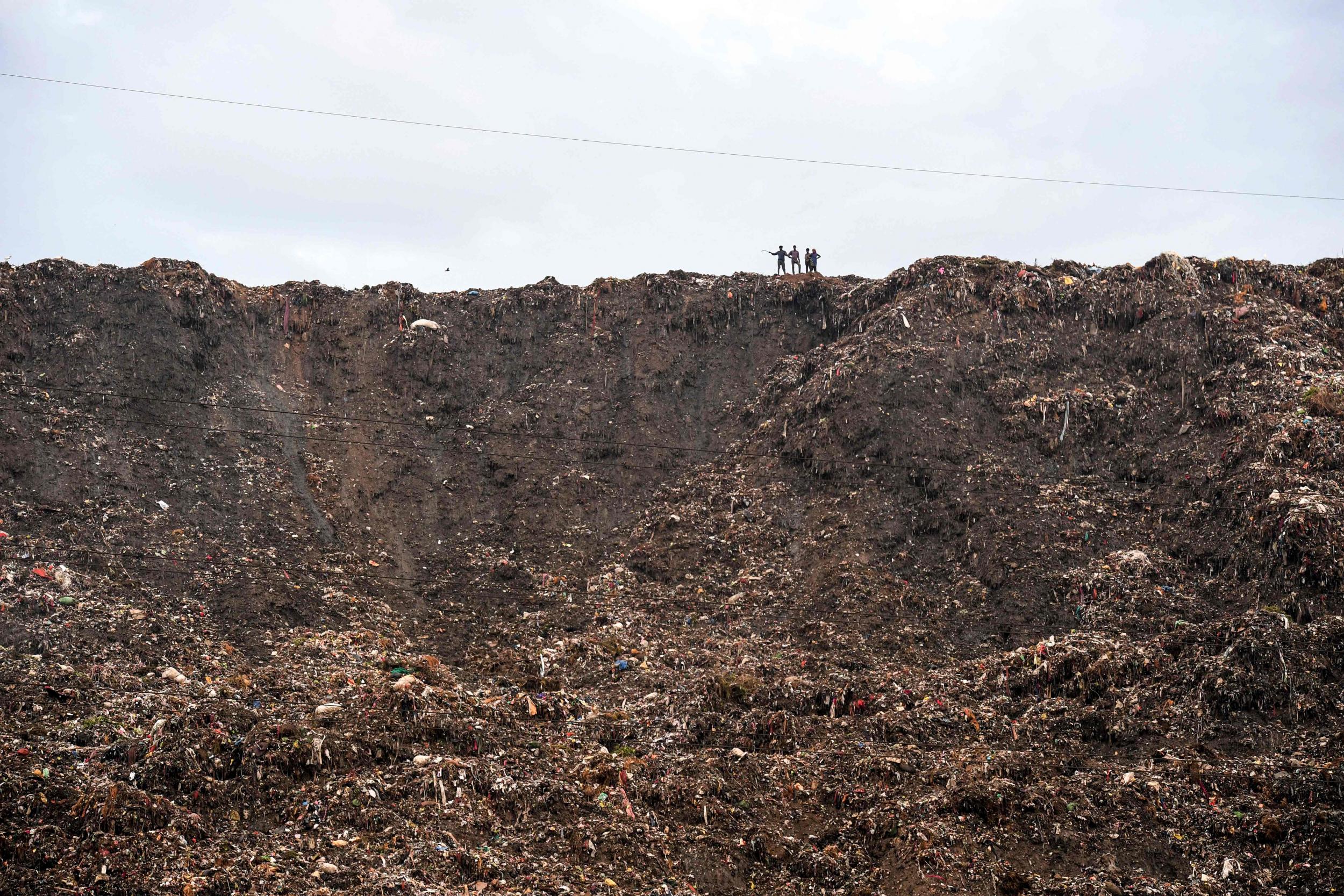India’s ‘rubbish mountain’ is about to grow taller than the Taj Mahal
Putrid landmark is so vast India’s Supreme Court has warned red lights will have to be put on top to warn aircraft

India’s largest “rubbish mountain” is on course to grow taller than the Taj Mahal in 2020.
The Ghazipur landfill already takes up more than 40 football pitches of land on the eastern edge of New Delhi, which is widely considered to be the world’s most polluted capital.
The vast dump of rubbish rises by 10m every year. It is already 65m high and will be taller than the 73m Taj Mahal next year, according to the report by AFP.
This putrid landmark is now so vast India’s Supreme Court has warned red lights will have to be put on the top to warn aircraft.
Chitra Mukherjee, head of Chintan, an environment advocacy group said: “It all needs to be stopped as the continuous dumping has severely polluted the air and ground water.”
New Delhi toxic smog pushes air pollution to peak levels
Show all 14The tip was opened in 1894, reached capacity in 2002 and has been growing ever since.
With a rapidly growing population and increasing consumption this is only set to continue. Indian cities generate 62 million tons of waste each year and current projections say this will increase to 165 million by 2030.
Birds of prey, stray dogs, rats and more than 1,000 waste-pickers – many of whom are children – comb through the 2,000 tons of garbage that is dumped at the landfill daily.
Life on Ghazipur landfill is extremely dangerous.
Fires that can last for days regularly break out due to methane gas being belched out from the dump. In 2018 part of the mountain collapsed, killing two people.
People living nearby say the air is so toxic they can hardly breathe and many have complained of acute respiratory and stomach problems.
In January, Delhi air pollution surged to emergency levels. The state-run Central Pollution Control Board’s air quality index found the concentration of poisonous particulates in the air was 12 times higher than the US recommended level.
India actually has a low per-capita plastic consumption of just 11kg compared to western countries where up to 10 times that is consumed each year, but disposal remains a massive problem.
Earlier this year India banned imports of waste plastic in a bid to close the gap between waste generation and recycling capacity.
It has also committed to completely phasing out single-use plastics by 2022.
Subscribe to Independent Premium to bookmark this article
Want to bookmark your favourite articles and stories to read or reference later? Start your Independent Premium subscription today.

Join our commenting forum
Join thought-provoking conversations, follow other Independent readers and see their replies